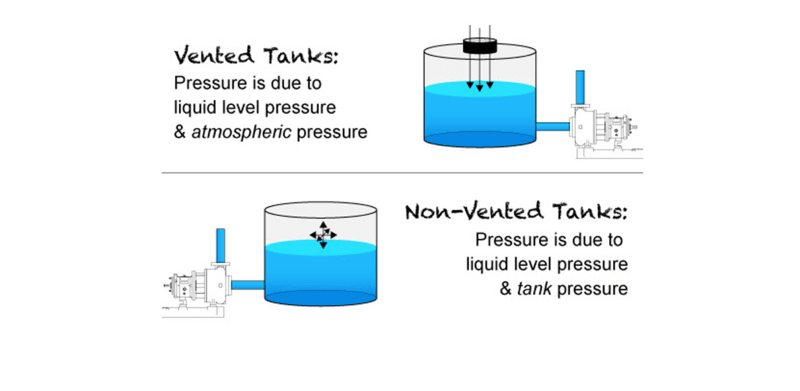A customer's new pump (Berkeley B3ZPM) will be supplied by a 900ft 4" PVC underground pipe fed by a water district turnout with a "normal operating range" of 17.5-20psi. The pump supplies water trucks (12ft high) and a fire water tank (16ft high) through a back flow preventer (10psi pressure drop) and fill valves. My plan is to control it with a VFD in PID via suction inlet pressure (NPSHa rises, pump speeds up, slows down when it drops, sleeps & wakes on thresholds, field tuning for min/max hz limits), with a simple pressure differential switch on the discharge side to provide a run command. The idea is to extract maximum available volume from the unpredictable inlet conditions while avoiding cavitation.
If I'm doing the math right, max pipeline flow would be 300gpm based on friction loss at 20psi (46hd-ft). Available flow ranges to supply the booster pump (given 20-17.5psi = 46-40hd-ft) are something like: 200gpm@ 24.4-18.4 NPSHa, 225@ 19.1-13.1, 250@ 13.3-7.3, 275@ 7.0-1.0
With the BFP, other friction losses plus static lift, the operating points for the pump range from 25 to around 45hd-ft. When I experiment with impeller diameters using the (very cool) Pentair BEC2 Electronic Catalog tool, full diameter (9") provides wonderfully low NPSHr at the desired flow rates (example: 1290rpm 266gpm@45' = 6.9' NPSHr), but the lower head (1000rpm 272gpm@25ft/5.3 NPSHr) falls on the "Full reject" MCSF curve shown.
When impeller diameter is reduced to 7.63" to avoid MCSF: 1557rpm 365gpm@45'/16.5' NPSHr, 1220rpm 280@25'/11.1' NPSHr
Seems like a lot of volume to lose (because NPSHa will be inadequate for those rates at this diameter, VFD in PID will sleep) . . .
My question then: how risky is it to ignore MCSF for portions (initial fill) of expected operating time?
If I'm doing the math right, max pipeline flow would be 300gpm based on friction loss at 20psi (46hd-ft). Available flow ranges to supply the booster pump (given 20-17.5psi = 46-40hd-ft) are something like: 200gpm@ 24.4-18.4 NPSHa, 225@ 19.1-13.1, 250@ 13.3-7.3, 275@ 7.0-1.0
With the BFP, other friction losses plus static lift, the operating points for the pump range from 25 to around 45hd-ft. When I experiment with impeller diameters using the (very cool) Pentair BEC2 Electronic Catalog tool, full diameter (9") provides wonderfully low NPSHr at the desired flow rates (example: 1290rpm 266gpm@45' = 6.9' NPSHr), but the lower head (1000rpm 272gpm@25ft/5.3 NPSHr) falls on the "Full reject" MCSF curve shown.
When impeller diameter is reduced to 7.63" to avoid MCSF: 1557rpm 365gpm@45'/16.5' NPSHr, 1220rpm 280@25'/11.1' NPSHr
Seems like a lot of volume to lose (because NPSHa will be inadequate for those rates at this diameter, VFD in PID will sleep) . . .
My question then: how risky is it to ignore MCSF for portions (initial fill) of expected operating time?

